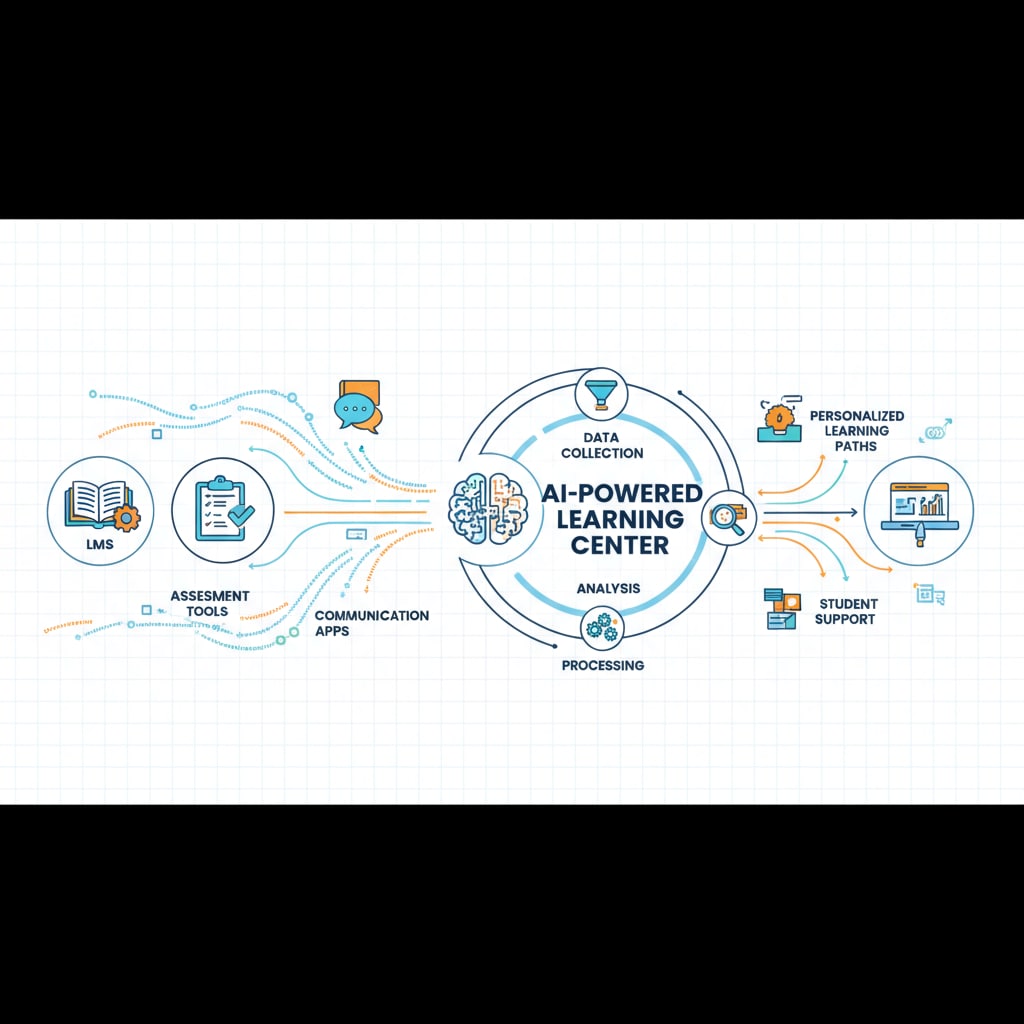In the current K12 educational landscape, the concept of an AI learning center that focuses on student data integration for teaching insights is gaining significant traction. Teachers often find themselves grappling with data fragmentation across multiple platforms, which severely hampers their teaching effectiveness. A unified AI learning center could be the game – changer, seamlessly bringing together data from various sources related to students.

The Problem of Data Silos in K12 Education
Today’s K12 education is filled with numerous platforms. There are learning management systems, assessment tools, and even communication apps, each generating its own set of student data. For example, a learning management system might track students’ assignment submissions and grades, while an assessment platform provides detailed information about their test performance. However, these data sources remain isolated from one another. As a result, teachers struggle to get a comprehensive view of their students’ progress. They may have to switch between different interfaces, analyze data in separate spreadsheets, and piece together fragmented information. This not only consumes a great deal of time but also makes it difficult to draw accurate conclusions about students’ learning needs. According to ISTE’s research on data – driven decision – making in education, this data fragmentation is a major obstacle to effective teaching.
The Feasibility of Building a Unified AI Learning Center
Technologically, building a unified AI learning center is highly feasible. With the advancements in data integration technologies, such as application programming interfaces (APIs) and data warehousing, it is possible to collect and consolidate data from multiple platforms. Many modern educational platforms already offer APIs that allow for seamless data extraction. Additionally, AI algorithms can be employed to clean, transform, and analyze the integrated data. Machine learning techniques can identify patterns in the data that might otherwise go unnoticed. For instance, they can detect early signs of learning difficulties in students by analyzing their performance trends over time. Moreover, cloud computing provides the necessary infrastructure to store and process large volumes of student data. As explained on Wikipedia’s page on cloud computing, cloud services offer scalability and cost – effectiveness, making it easier to manage the data requirements of an AI learning center.

From a practical perspective, educational institutions can collaborate with technology providers to develop or implement such a center. These partnerships can ensure that the AI learning center is tailored to the specific needs of the K12 environment. For example, they can focus on features that are most relevant to teachers, such as real – time data access and easy – to – understand visualizations.
The Value of an AI Learning Center in Transforming Education
The integration of student data in an AI learning center offers numerous benefits. Firstly, it provides educators with real – time teaching insights. Teachers can quickly access a holistic view of each student’s strengths, weaknesses, and learning progress. This enables them to make more informed decisions about instructional strategies. For example, if the data shows that a particular student is struggling with a specific concept, the teacher can immediately adjust the lesson plan to provide additional support. Secondly, it enhances the learning experience for students. By analyzing data, the AI learning center can offer personalized learning recommendations. It can suggest appropriate learning resources, such as videos or practice exercises, based on a student’s learning style and current knowledge level. In addition, the center can help in early identification of students who may be at risk of falling behind, allowing for timely interventions.
Readability guidance: In this article, we have clearly presented the problem of data silos, the feasibility of building an AI learning center, and its value in K12 education. We have used short paragraphs and provided external links to reliable sources to enhance credibility. The images help to visually represent key concepts, making it easier for readers to understand the complex ideas related to student data integration and teaching insights in the context of an AI learning center.


